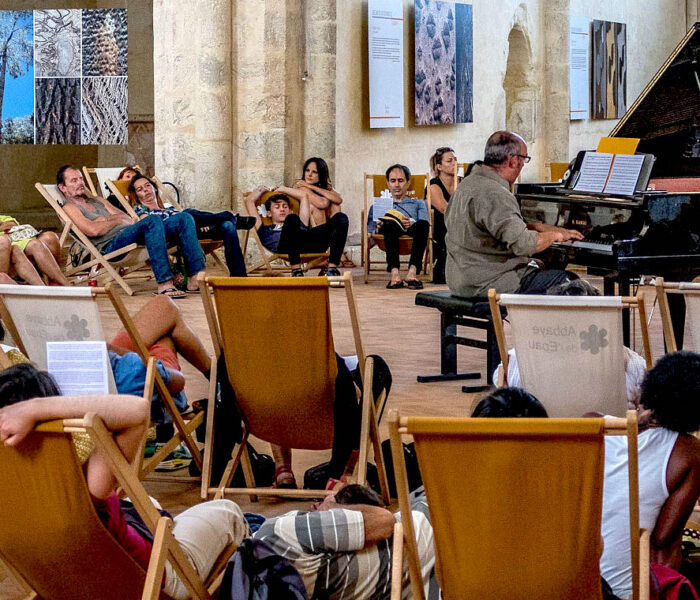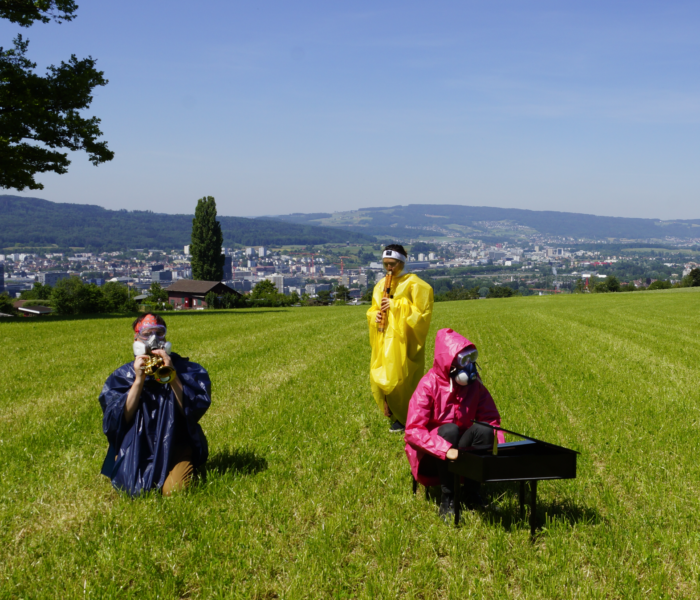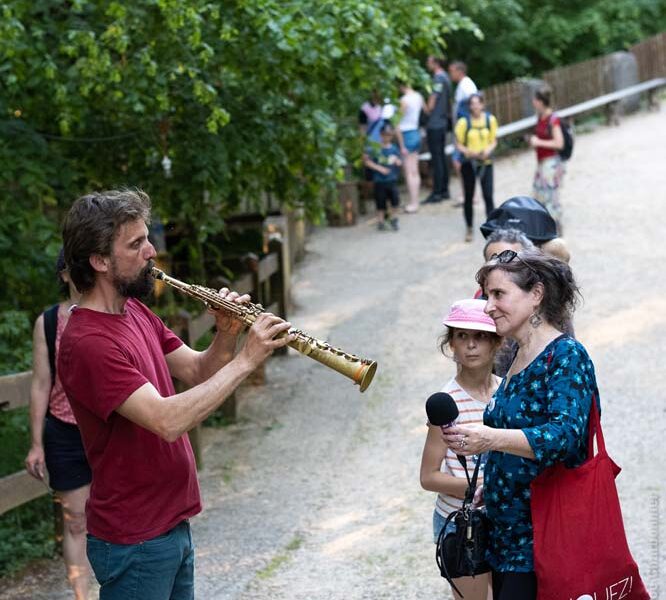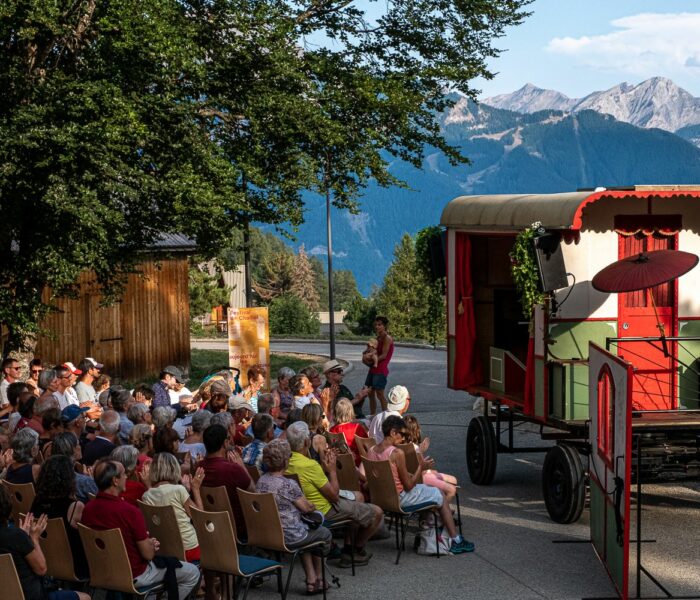Qu’est-ce qu’un concert ? C’est la question que nous posons à travers ce dossier qui, en dix textes ou entretiens, vient rappeler les profondes mutations des pratiques qui continuent de s’opérer sur la « scène » musicale – qu’il s’agisse des démarches et processus artistiques ou des formes de leur réception – et contribuent à construire (et, nécessairement, déconstruire) notre conception de la chose.
Le concert et son double
Si l’écoute collective, dans un même temps et dans un même lieu, d’une pièce jouée en direct, constitue la forme la plus immémoriale de contact avec la musique, la naissance de l’enregistrement, la prolifération et le perfectionnement des dispositifs d’écoute domestique sont venus depuis plus d’un siècle proposer un modèle d’écoute alternatif, « privé » ou du moins individuel, domestique ou déambulatoire. Et avec celui-ci, une alternative à cette forme canonique – et codifiée – du concert telle que nous la connaissons (et la pratiquons, avec tout ce que le verbe implique de « sacré ») sous nos latitudes. Musiciens dispersés dans l’espace, œuvres immenses, voire participatives, fleuves ou brèves, agençant le sonore, le visuel et le mouvement, dispositifs de spatialisation, formes déambulatoires…
« Qu’est-ce qu’un concert ? », c’est autour de cette question que Bastien Gallet revient sur cette expérience bien particulière, à la fois « moment dédié aux œuvres et à leurs rapports » et « expérience esthétique et sociale ». C’est aussi la question que se sont posée tous ces pianistes évoqués par leur collègue François Mardirossian, qui, en particulier aux États-Unis, n’ont eu de cesse de transformer la manière de faire sonner leur instrument et la manière de le présenter au public – après que Franz Liszt eut posé les fondements du concert « classique » (qu’il serait d’ailleurs plus juste d’appeler « concert romantique »).
Il est vrai que les bouleversements technologiques et culturels susmentionnés ont profondément fait bouger la pratique des artistes, qu’ils soient ou non « compositeurs ». Guillaume Kosmicki retrace jusqu’à la fin du XXe siècle l’histoire séculaire des rapports entre la vision et l’écoute, entre vue et ouïe, et la généalogie de ces œuvres et de ces artistes qui, en la faisant sortir des salles, ont contribué à modifier notre perception de la musique en même temps que notre usage du sonore. Tout en rappelant que « dans de nombreuses cultures traditionnelles, la différence entre le musicien et le public n’existe pas ou est bien moins rigide, la performance musicale est par essence collective… »
Le métier du compositeur autant que le rôle de l’instrumentiste, leurs créativités respectives, n’ont cessé de se reconfigurer à mesure que les progrès technologiques ont accéléré la porosité entre les disciplines, et que les évolutions des pratiques culturelles, de l’histoire et de la sociologie de l’art ont favorisé telle ou telle manière de recevoir la musique. C’est d’ailleurs parce qu’ils en avaient assez d’être traités en « exécutants » que la flûtiste Christina Kubisch et le batteur Christophe Fellay ont, chacun à leur génération et à leur manière, délaissé leur pratique d’instrumentiste pour s’orienter vers des pièces conçues spécifiquement en fonction du site qui les accueille (les anglophones les disent site-specific, les latinistes in situ), et devenir des « artistes sonores ».
« Musicaliser les lieux », créer des situations d’écoute, c’est également le sens des projets qu’Anne-Laure Pigache et Anne-Julie Rollet, passionnées de voix, de radios et de bandes magnétiques, imaginent avec Les Harmoniques du Néon. Formé auprès de Michael Jarrell notamment, Léo Collin incarne à sa manière ce compositeur du 3e type, ce type d’artiste polymorphe qu’Hémisphère son aime à vous présenter : dans de multiples lieux de Zurich, il imagine avec son Kollectiv International Totem des « pièces de musique-théâtre » qui permettent, dit-il, de le « soigner de (s)es raideurs d’esprit ».
Partager l’instant
Qu’est-ce qu’un concert ? Qu’impliquent et que signifient l’exécution (voire la création) et la réception simultanées, en chair, en os et en direct, dans un même lieu, d’une composition musicale ? Les questions du lieu et du format frontal, et toute la charge symbolique dont l’un et l’autre sont porteurs, courent comme des leitmotive à travers ce dossier.
A travers le panorama dressé par Anne Montaron d’un certain nombre de festivals dédiées aux musiques de création en milieu rural, à travers les applications participatives développées par Léo Collin pour chacune de ses pièces ou les concerts pour 1 spectateur dispensés par Gwen Rouger dans sa Caravane, se dessine une autre manière d’aborder le concert, et surtout le spectateur : dépouillée de ses marqueurs sociologiques, plus écologique, plus naturelle peut-être, plus zen, plus détendue mais non moins intense, conférant – à la manière des pièces de Christina Kubish et de Christophe Fellay – un rôle actif à l’oreille de la personne qui écoute, et à sa sensibilité.
Joindre l’immersif au collaboratif, c’est aussi l’ambition qui anime l’équipe du Studio d’en haut, lieu nantais hors normes dédiés à toutes les recherches musicales inclassables. Et notamment le percusionniste Will Guthrie, apôtre depuis longtemps d’une communication plus informelle avec les gens : « Depuis 20 ans, je joue mes solos au milieu de la pièce et des gens, cette idée d’être sur scène avec le public en face est dépassée depuis longtemps. Jouer sur scène, loin du public, n’est pas satisfaisant. Les musiques expérimentales redéfinissent sans cesse le rapport à la scène, de manière intuitive, sans même se poser la question. »
À une époque où nos sens et notre attention sont saturés de sollicitations, l’enjeu est crucial de créer d’autres situations d’écoute, de ménager des « zones d’attention temporaire », des espaces de réceptivité et de liberté où l’expérience peut s’effectuer le plus directement, le plus spontanément possible : pour Marie Jeanson, codirectrice du festival Archipel, à Genève – interrogée à côté de quatre programmateurs d’univers et de pays différent –, il s’agit d’« être dans une sorte de liberté, de déambulation », de « prendre en charge l’auditeur tout en le responsabilisant ».
« Selon moi, le dispositif frontal n’est ni obsolète, ni à remplacer, souligne Michaël Dian, directeur de l’exemplaire Espace culturel de Chaillol. Je ne crois pas qu’il faille tourner le dos à trois ou quatre siècles de diffusion dans un format classique, où les artistes sont sur scène dans la lumière, et le public dans la pénombre, dans une écoute silencieuse. Ce sont des moments privilégiés, auxquels je tiens énormément, et le public aussi. La question importante à se poser, c’est de savoir quelle est la qualité de relation entre artistes et habitants ? Je dirais que ce dispositif doit être complété par des espaces d’interaction entre les artistes et les habitants, des gens qui, à un moment donné, se choisissent comme public. Ce point de passage est très important. Le ‘Public’ n’existe pas en soi. Il y a des gens, habitant un territoire, qui à un moment, ayant repéré une proposition, se trouvent en capacité de franchir le seuil d’une salle ou d’un lieu de spectacle. » L’avenir est selon lui à « l’hybridation des ressources culturelles dans un même espace » ; à des moments de rencontre au sens fort du terme, uniques et équitables.
Inventer des œuvres « fluides », selon le mot de l’artiste et curateur allemand Kalas Liebfried, au besoin en sortant des salles qui leur sont traditionnellement dévolues ; créer ainsi des champs de tensions (et de responsabilités) entre les œuvres et les personnes qui les reçoivent, imaginer d’autres rapports aux personnes plutôt qu’au « Public » : davantage que les formes artistiques elles-mêmes, la manière dont celles-ci prennent en compte la relation et le contexte qui les unissent à celles et ceux qui les reçoivent, ce rapport bienveillant à un spectateur « émancipé » seront décisifs pour donner un souffle inédit à une « histoire des pratiques culturelles (qui) tourne finalement en boucle », comme le constate Frédéric Mazelly, directeur la programmation de La Villette à Paris… L’écoute et l’attention, après tout, ne sont-elles pas deux notions jumelles ?
Bonne lecture !
David Sanson
Photo © Marina Rosenfeld



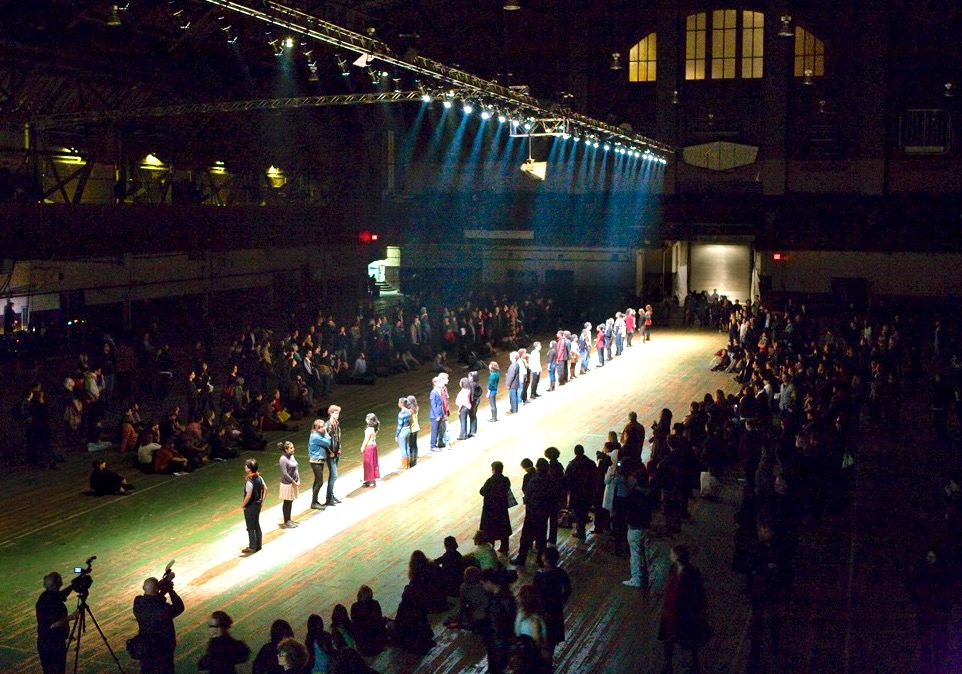)
